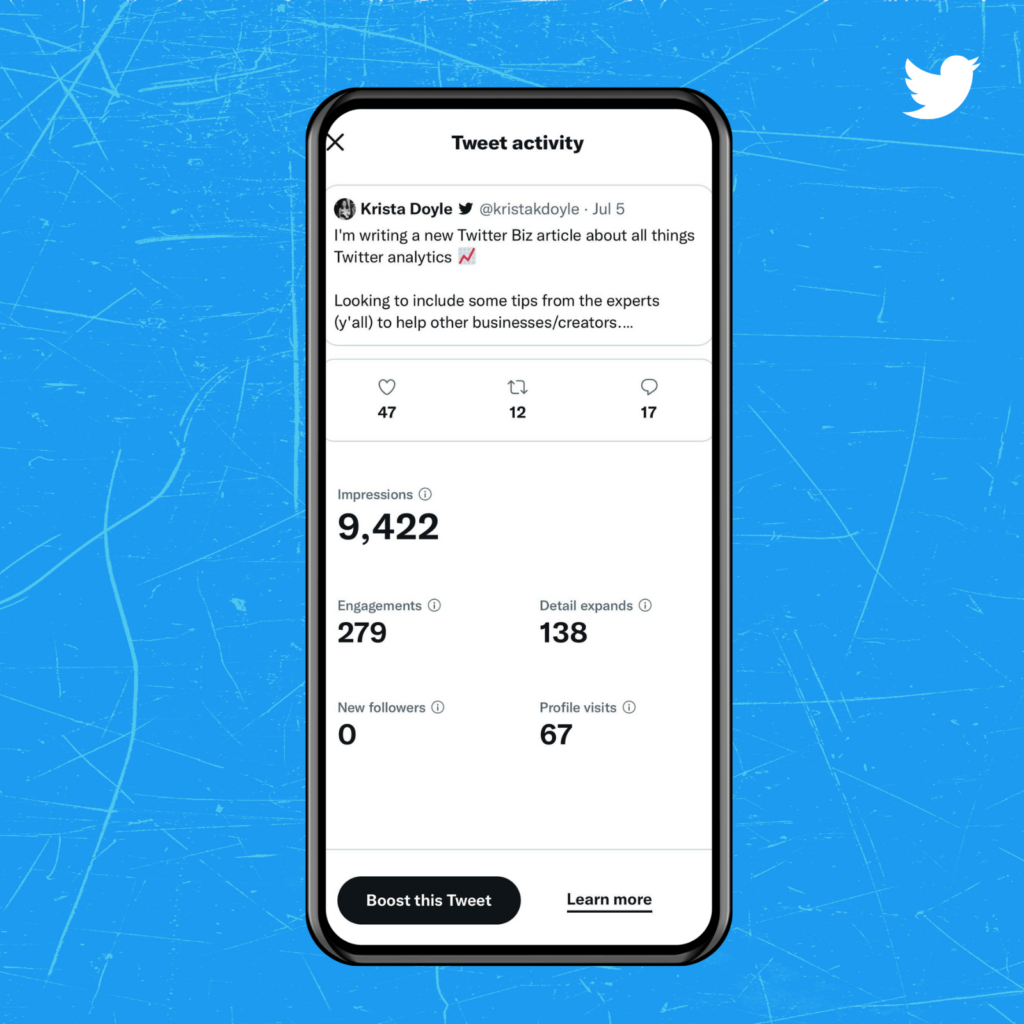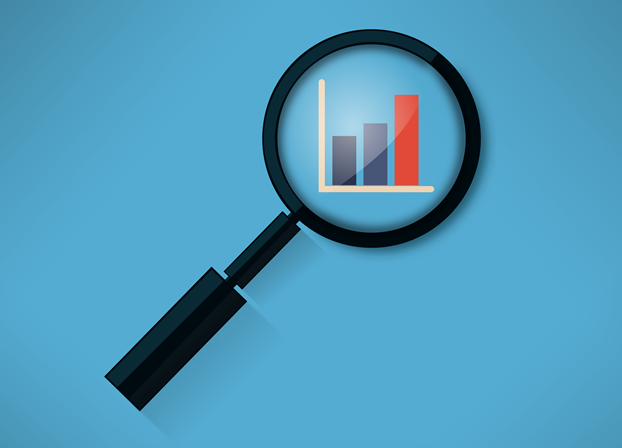
Imagine having a secret toolbox, one that could skyrocket your Twitter (now called "X") presence into the stratosphere. The great news? This toolbox isn’t just real; it’s hiding in plain sight within the resources you already possess: your Twitter analytics. These tools, often overlooked, are the key to unlocking the full potential of your online presence.
In the digital age, each tweet is both an opportunity and a mystery. Why do some of your tweets soar with engagement while others seem to vanish into the void? The answers lie within the data, a treasure trove of insights waiting to be discovered. Unraveling these mysteries offers a path to not only understanding your audience better but also to enhancing your social media strategy.
Let’s embark on a journey that's not only fun but also immensely practical. We're diving deep into the world of Twitter analytics to uncover the golden keys that transform good strategies into great ones. This exploration will not only enlighten you but also equip you with the tools necessary for substantial growth.
On this adventure, you'll discover:
- What Is Twitter Analytics?
- Who Benefits from Twitter Analytics
- How to Access Twitter Analytics
- What metrics from Twitter analytics are significant to us?
- How to use Twitter analytics tools for the best results
The time has come to let your Twitter account shine. Are you ready? Follow our guide, dive deep, and unlock the door to your social media success. This journey is not just about exploration but also about transformation, turning potential into actual success.
1. What Is Twitter Analytics?
Twitter Analytics is a powerful dashboard that provides key insights into your Twitter account's performance. It tracks everything from follower growth and engagement to tweet impressions and interactions, offering a comprehensive view of your social media impact. Whether you're a business aiming to refine your strategy or an individual looking to boost your online presence, Twitter Analytics offers the data-driven insights needed to optimize your Twitter activity. Understanding these metrics is the first step toward making informed decisions that can significantly improve your reach and engagement.

2. Who Benefits From Twitter Analytics:
Twitter Analytics serves a broad spectrum of users ranging from individual practitioners to large agencies, all of whom share a common goal: to enhance their Twitter presence based on actionable insights. The platform is instrumental for those keen on analyzing tweet performance, engagement rates, and overall social media strategy effectiveness. Understanding the diverse needs and goals of these users can help tailor strategies that are both effective and efficient, ensuring that each tweet has the potential to make an impact.
#1 Social Media Practitioners:
- Focus: Brand awareness, follower growth, and community engagement.
- Goals: Audience expansion, demand generation for products/services, and driving content consumption.
- Use Case: Practitioners rely on Twitter analytics to monitor post performance, engagement, and follower trends, enabling them to fine-tune their content strategy for better resonance with their audience. This focus is essential for building a strong, engaged community around your brand.
#2 Social Media Managers:
- Focus: Lead generation, product/service adoption and retention, and brand engagement.
- Goals: Enhancing conversion rates, encouraging repeat purchases, and increasing cross-sell opportunities, while managing customer churn and retention.
- Use Case: Managers utilize analytics to assess the social ROI from both paid and organic efforts, identifying areas for improvement and evaluating team performance. This strategic approach helps in maximizing the effectiveness of each campaign, ensuring a healthy return on investment.
#3 Agencies:
- Focus: Content creation, publishing, and performance reporting for client brands.
- Goals: Blend of practitioners’ and managers’ objectives, emphasizing client-specific performance metrics and collaboration with internal teams.
- Use Case: Agencies benefit from detailed performance analytics to craft customized reports, showcasing the impact of their strategies on client goals and brand visibility. This collaborative effort is key to maintaining strong client relationships and achieving shared success.
In essence, Twitter Analytics is not just a tool but a strategic ally for professionals dedicated to mastering the art of social media influence. By integrating real-time data and comprehensive insights into their workflows, users across the spectrum can enhance their Twitter strategy, ultimately achieving superior engagement and tangible business results.

3. How to Access Twitter Analytics
Accessing Twitter Analytics is a streamlined process designed for both desktop and mobile users, offering profound insights into your account’s performance metrics. This accessibility ensures that anyone, regardless of their technical expertise or device preference, can leverage the power of analytics to enhance their Twitter strategy.
#1 For Desktop Users:
- Direct Entry: Initiate by visiting https://analytics.twitter.com. Authenticate by logging in with your Twitter credentials. This direct approach allows users to dive deep into their analytics without any unnecessary steps, offering immediate access to a wealth of data.
- Via Twitter’s Main Dashboard: Click the ellipsis (three dots) on the left-side navigation menu of Twitter’s homepage. Proceed to "Creator Studio" and select "Analytics" to access the comprehensive analytics dashboard. Here, you can analyze a monthly overview of your Twitter activities. This method integrates analytics seamlessly into the daily use of Twitter, making it a convenient option for regular check-ins.
#2 For Mobile Users:
- The Twitter app provides a streamlined view of analytics for individual tweets rather than the full dashboard. Navigate to the desired tweet, and select “View analytics” to unveil metrics like engagements, impressions, and interactions directly related to that post. This feature is particularly useful for on-the-go analysis, enabling users to quickly gauge the performance of their content anywhere, anytime.

#3 Utilizing Third-Party Tools (e.g., Hootsuite):
- For an integrated analysis across different social media platforms, platforms like Hootsuite offer an advantageous perspective. Access Twitter analytics within Hootsuite by selecting the Analytics icon on your dashboard’s left menu. This approach facilitates a centralized monitoring environment for all your social media engagements and metrics, making it ideal for users managing multiple platforms simultaneously.
4. What Metrics From Twitter Analytics Are Significant to Us?
Twitter Analytics provides a robust framework for understanding and enhancing your social media strategy through a detailed analysis of various key metrics. This sophisticated toolset enables users to dissect and leverage data across different dimensions of their Twitter activity, turning insights into action. Here's an expert breakdown of the actionable metrics available through Twitter Analytics, emphasizing their importance in shaping an effective Twitter presence.
#1 Engagement Insights:
- Engagement Rate: A critical measure, the engagement rate offers insights into the percentage of viewers who interact with your tweets through likes, comments, retweets, or clicks. For example, an engagement rate above 2% is generally considered strong, indicating high audience involvement. This metric is fundamental in assessing the resonance of your content and its ability to captivate your audience.
- Likes and Replies: These metrics provide immediate feedback on your content’s resonance with your audience. An upward trend in likes and replies often correlates with increased brand affinity, signaling that your messages are hitting the mark with your followers.
- Retweets: Sharing metrics, including retweets without comments, extend your content's reach beyond your direct followers, amplifying visibility. A high retweet rate suggests content virality, marking the success of your tweets in engaging and resonating with a wider audience.
- Link Clicks: This metric gauges the effectiveness of tweets in driving traffic to external content, crucial for content marketing strategies. A successful tweet might generate hundreds to thousands of clicks, depending on your follower count and engagement levels, underlining the importance of crafting compelling calls to action within your tweets.
#2 Visibility and Audience Reach:
- Impressions: Offering a view count of how many times a tweet appears in a timeline, impressions reflect content's reach. For instance, a well-received tweet might garner 10,000+ impressions, showcasing the extensive visibility of your content across the platform.
- Reach vs. Followers: While closely related, reach specifically measures the unique users who see your content, providing a nuanced view of your actual audience size versus potential audience growth. This distinction is vital for understanding the true extent of your content's impact beyond just your existing follower base.

#3 Follower Dynamics:
- Follower Growth: Tracking the net gain or loss of followers over time, this metric highlights the effectiveness of your content strategy in attracting new followers. Consistent follower growth is indicative of a successful content strategy that resonates with your target audience, contributing to the ongoing expansion of your digital footprint.
- Top Follower: Identifies new followers with the highest own follower count, suggesting potential high-value connections or influencers. This insight can be pivotal in pinpointing opportunities for partnerships or collaborations that could amplify your brand’s visibility and reach.
#4 Content Performance:
- Top Tweet/Media Tweet: Pinpoints tweets that achieve the highest engagement or impressions, offering a blueprint for what resonates with your audience. Analyzing these top-performing tweets provides valuable lessons in content preferences, guiding future content creation to match audience interests.
- Monthly Performance Overview: Compiles engagement trends, top tweets, and follower growth, serving as a strategic planning tool for content optimization. This holistic view is essential for identifying successful strategies and areas for improvement, allowing for data-driven decision-making in your content strategy.
#5 Response Efficiency:
- Response Rate and Time: These metrics evaluate how effectively and swiftly you engage with audience queries or comments, impacting brand perception and follower interaction quality. Prompt and meaningful interactions can significantly enhance your brand's reputation and foster a sense of community among your followers.
#6 Advanced Analytics and Conversion Tracking:
- Trend Insights and Benchmarking: Enables comparative analysis over time, crucial for adjusting strategies to align with audience preferences and social media trends. Keeping a pulse on these trends ensures that your content strategy remains relevant and engaging.
- Website & Mobile App Conversions: By integrating conversion-tracking tags, you can attribute website actions or app installs to specific tweets, essential for assessing the ROI of Twitter activities. This advanced metric allows you to directly link your Twitter strategy to tangible business outcomes, underscoring the value of your social media efforts.

In conclusion, Twitter Analytics offers a comprehensive suite of metrics that empower users to refine their social media strategies through detailed performance analysis. By leveraging these insights, brands and individuals can enhance their Twitter presence, foster deeper audience engagement, and drive more meaningful outcomes from their social media efforts.
5. How to use Twitter analytics tools for the best results
The core structure for effectively using Twitter (X) analytics tools for optimal results, as derived from the provided blog content, can be summarized into several strategic actions and considerations. This framework highlights the importance of regular analysis, competitive awareness, industry benchmarking, and comprehensive social media audits. Here's a detailed breakdown:
#1 Regular Monitoring and Adjustment:
- Frequent Analysis: Engage in routine examination of your Twitter analytics, ideally on a monthly basis. This practice helps identify content trends, audience preferences, and growth in key metrics, ensuring that your strategy remains aligned with your audience's evolving interests.
- Strategy Optimization: Utilize insights gained from analytics to refine and adjust your social media strategy as necessary. This adaptive approach ensures that your content continues to engage and resonate with your audience, driving better results over time.
#2 Competitive Awareness:
- Monitor Competitors: Stay informed about competitors' social media activities without necessarily emulating them. Understanding their strategies and growth can provide valuable context for your own social media efforts, helping you identify unique opportunities to differentiate your brand.
- Balance Competition and Innovation: While it's important to be aware of the competitive landscape, also focus on pioneering unique strategies that set your brand apart. This balance is key to carving out a distinct presence in a crowded digital space.
#3 Industry Benchmarking:
- Compare Against Benchmarks: Utilize tools industry benchmarking feature to see how your performance measures up against broader industry standards. This comparison can illuminate areas of strength and opportunities for improvement, guiding your strategic adjustments.
- Leverage Benchmark Insights: Implement strategies suggested by benchmarking insights to enhance your rankings and performance relative to industry norms. This targeted approach allows you to focus your efforts on areas with the highest potential for impact.
#4 Social Media Audit:
- Comprehensive Audit: Conduct a thorough social media audit periodically. This structured review is essential for uncovering optimization opportunities and ensuring that your social media presence aligns with your strategic goals.
- Audit Tools and Templates: Employ available resources, such as free social media audit templates, to streamline the audit process. These tools can help ensure a comprehensive review of your social media presence, identifying gaps and areas for strategic improvement.
#5 Integrated Analytics Solutions:
- Unified Analytics Platforms: Consider using integrated analytics tools that consolidate insights across Twitter and other social platforms. These platforms offer a holistic view of your social media performance, enabling more informed decision-making.
- Trial and Adoption: Experiment with free trials of analytics platforms to explore their features and determine their fit for your social media strategy needs. This exploration can help you find the tools that best support your strategic objectives, enhancing your overall social media effectiveness.

By employing a holistic and strategic use of Twitter analytics tools, you can significantly enhance your social media impact and ROI. This structured approach ensures that you're not just collecting data, but actively using it to inform your strategy, stay ahead of trends, and achieve your social media goals.





